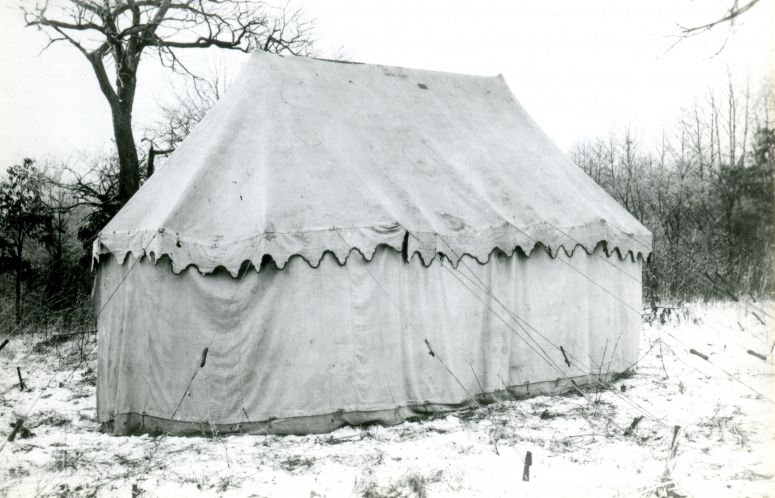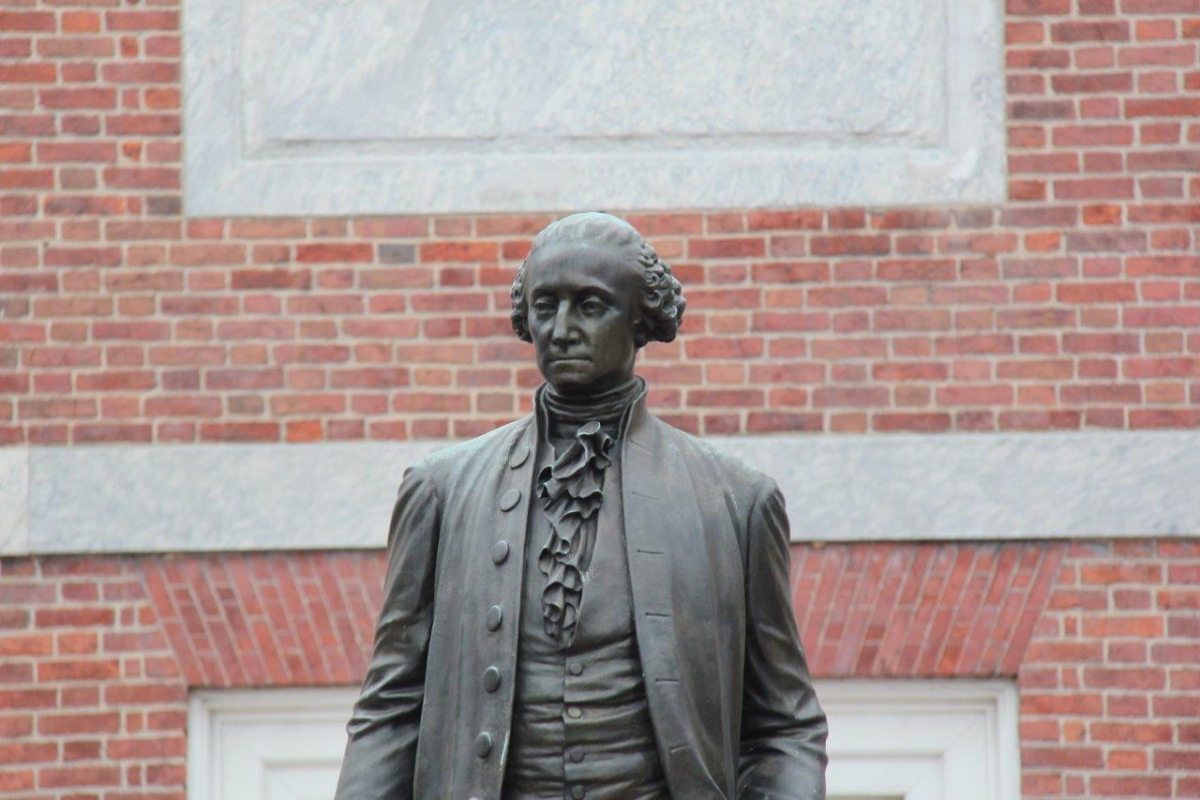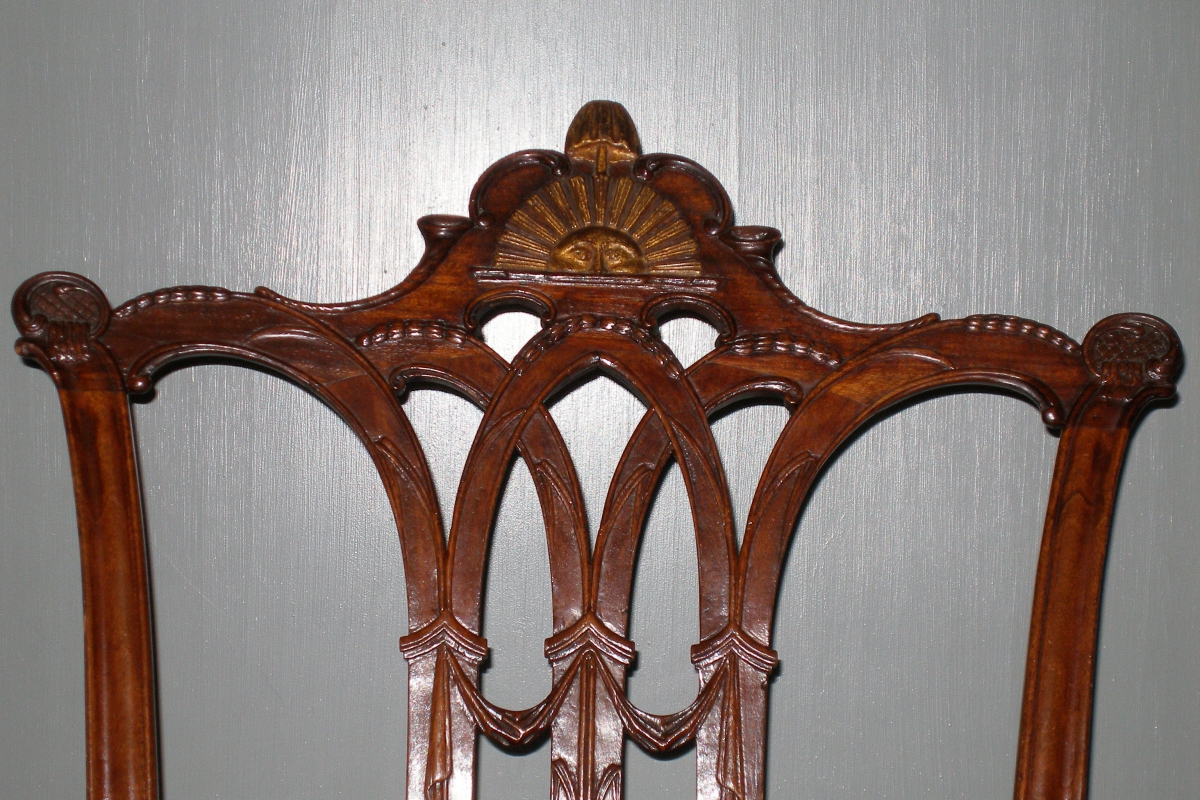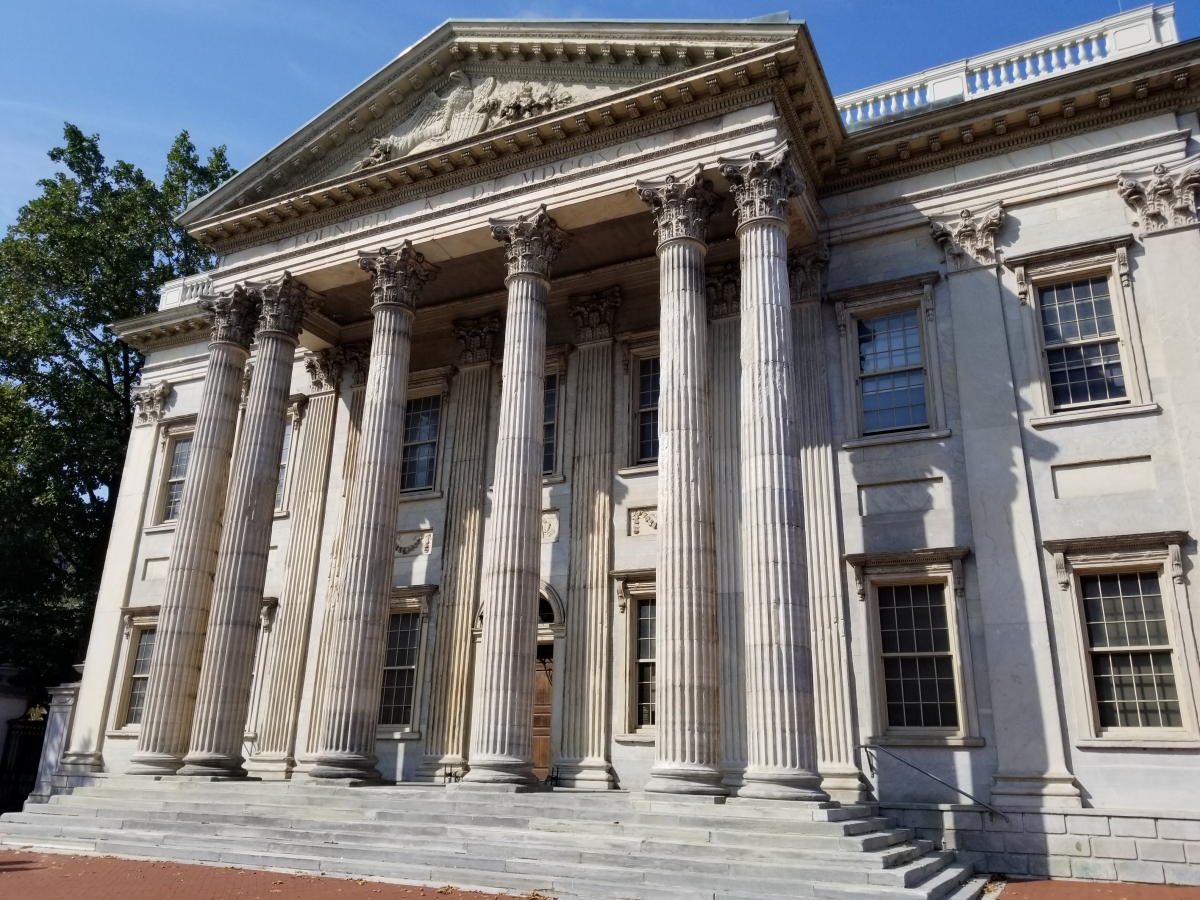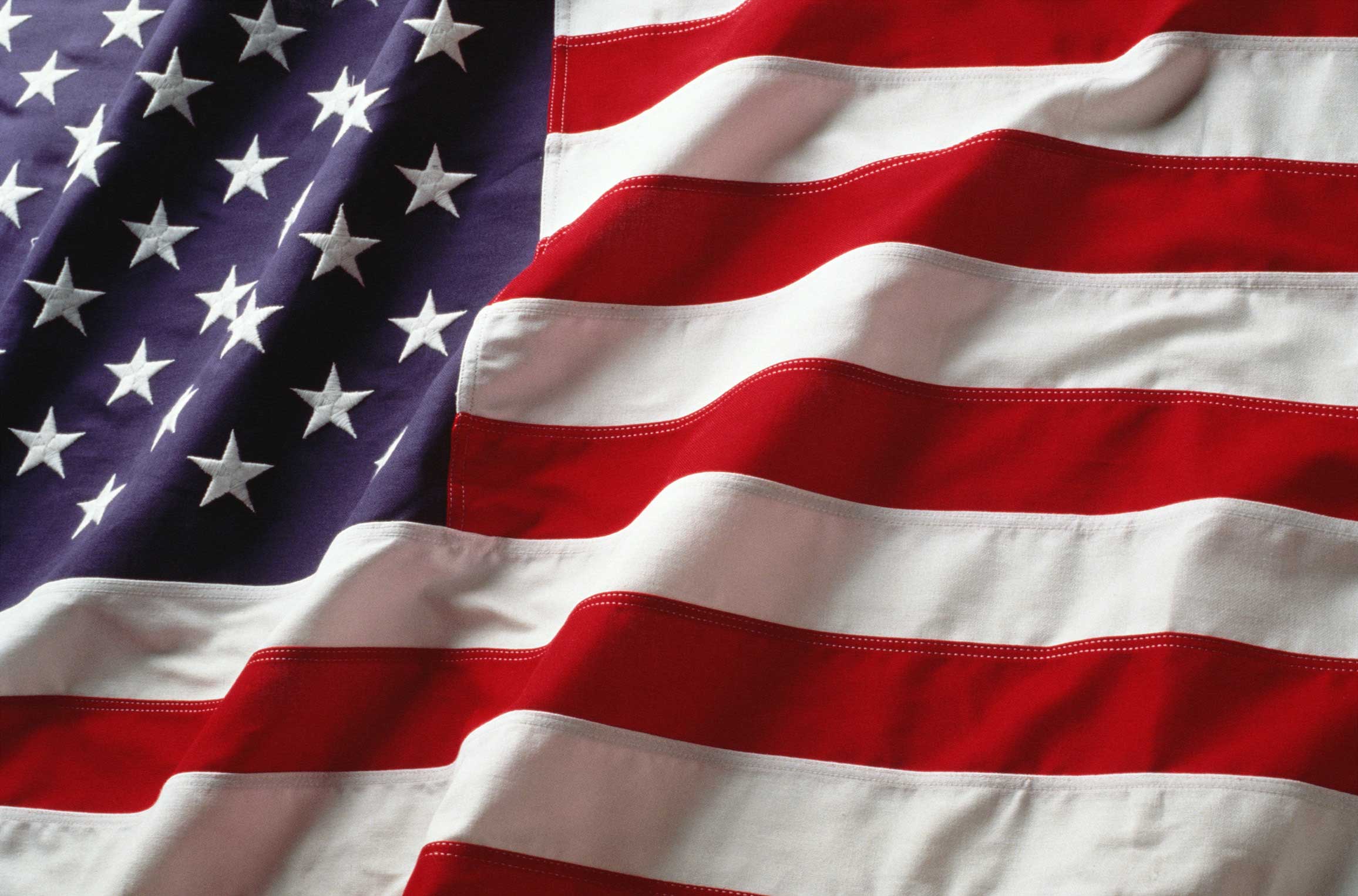Related Posts
Birth: February 22, 1732
Death: December 14, 1799
Colony: Virginia
Occupation: Surveyor, General, Politician
Significance: Served as the first Commander in Chief of the Continental Army (1775-1783); served as the President of the Constitutional Convention and signed the United States Constitution (1787); served as the first President of the United States (1789-1797)
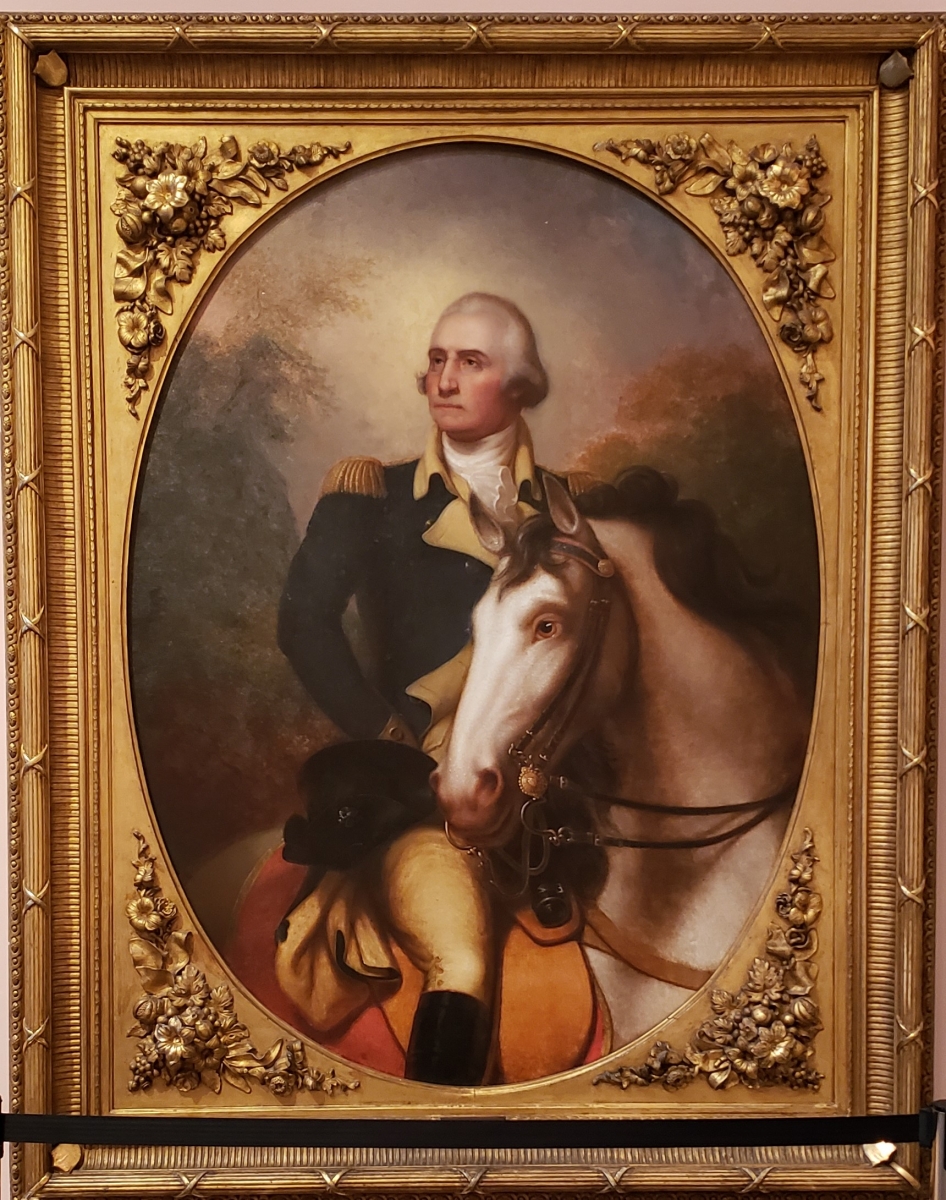
George Washington was one of the Founding Fathers of the United States. Washington was the first child born to Augustine Washington and Mary Ball Washington, wealthy plantation owners in Virginia.
At the age of 11, Washington’s father died and the majority of Augustine Washington’s estate went George Washington’s elder half-brothers who were from a previous marriage. Washington inherited one of his father’s plantation properties and ten slaves, which were managed with the assistance of his mother until Washington came of age. During his childhood, Washington did not receive much of a formal education, but he was well educated by private tutors. Washington then attended the
College of William and Mary where he received a license to become a land surveyor. Washington worked as a surveyor for only a few years before leaving the job to begin investing in land speculation.
Washington was close to his older half-brother, Lawrence Washington, who was a General in the Virginia Militia and encouraged George to also join the militia. Lawrence owned a plantation named
Mount Vernon, which he had inherited from his wife’s family. When Lawrence died from Tuberculosis at the age of just 34, George Washington began renting Mount Vernon from Lawrence’s widow. Washington would eventually inherit Mount Vernon, and it would be his estate until his death.
French and Indian War
In 1753, Washington attained the rank of the Major in the Virginia Militia, and he was sent on an expedition by the Royal Governor of Virginia to meet with Iroquois and French leaders who were located on the Ohio River, near the present day location of Pittsburgh. Washington delivered a series of demands regarding a territorial dispute and reported on the status of French fortifications in the area. After a successful expedition, Washington was promoted to Lieutenant Colonel, and he was sent back to the (Pittsburgh) area with more men in the Spring of 1754. A small battle took place when Washington attacked about 50 French soldiers in what would become one of the inciting incidents of the French and Indian War.
After his early success, Washington would lose the Battle of Fort Necessity to the French and surrender to the French later in 1754. Released by the French, Washington continued serving in the French and Indian War and added to his military reputation when he rallied troops after a disastrous ambush and was able to orchestrate a successful retreat. On two separate occasions during the retreat, the horse which Washington rode was shot and killed. During these skirmishes, Washington's hat and coat were both pierced by musket fire, though Washington himself somehow escaped major injury. Washington would eventually rise to the rank of Colonel and commanded Virginia's forces during the French and Indian War. Washington successfully defended the Virginia countryside throughout the French and Indian War, and he won the respect of his peers and those who served under him.
Politics & Government
After returning to Mount Vernon from the French and Indian War, Washington got involved in politics, and in 1758, he began serving in the Virginia Provincial Legislature. In 1759, Washington married the recently widowed
Martha Dandridge Custis, and together they raised her two children from her previous marriage. Martha was very wealthy, and the marriage made Washington one of the wealthiest men in Virginia. Washington greatly increased the size of Mount Vernon, and he purchased additional slaves to work his larger land holdings, making him one of Virginia’s largest slaveholders.
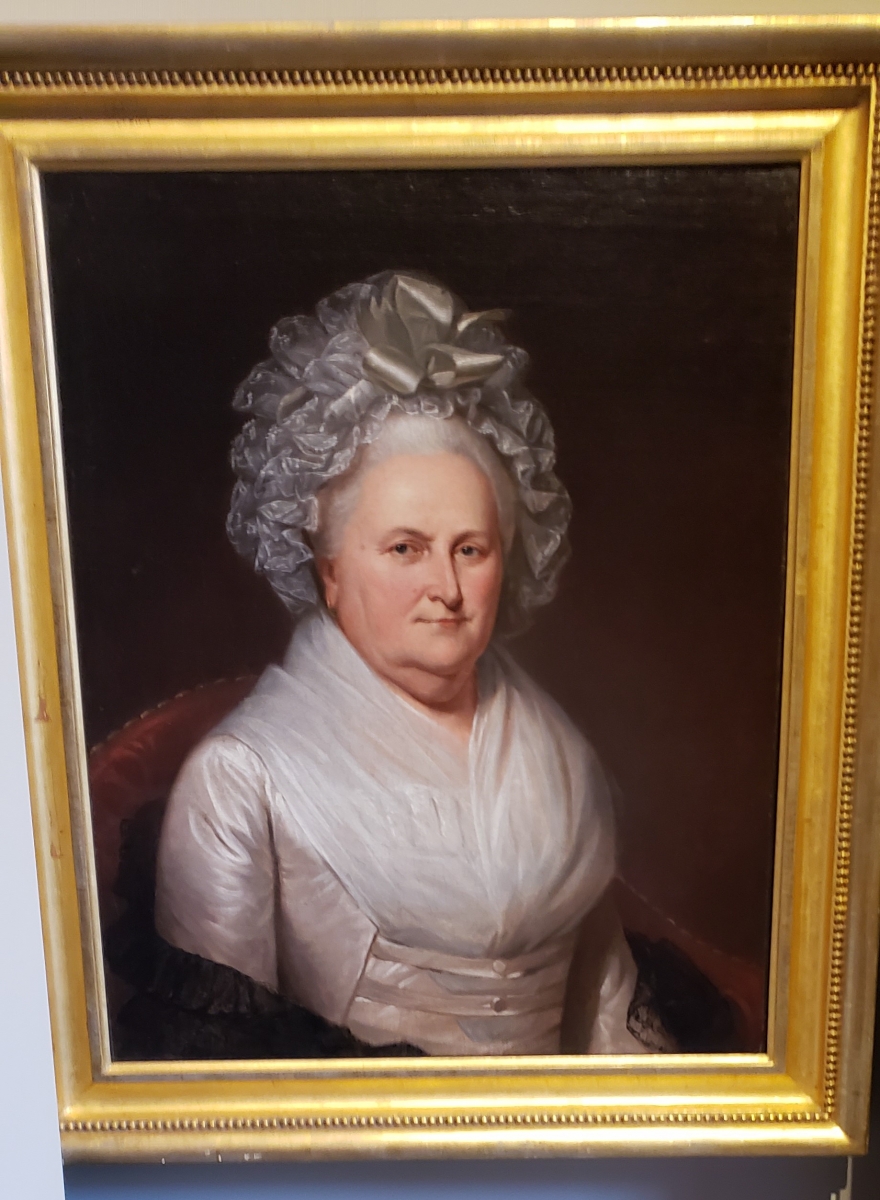
As the British began looking for ways to extract additional wealth from the American Colonies following the French and Indian War, Washington became increasingly frustrated with British policies. Washington believed the taxes levied by Parliament were unlawful without granting the Colonies representation within Parliament. Washington was also against Parliamentary acts that restricted American settlement and trade. Washington would lead protests against the Stamp Tax and the Townshend Acts, and he organized a boycott of British goods in 1769. When Parliament passed the Coercive Acts in response to the
Boston Tea Party in 1774, Washington decried the acts as tyrannical, and he was one of the first persons to call for a meeting of the Colonists from across the continent, and Washington was selected as a Delegate to the
First Continental Congress in Philadelphia. Washington was preparing to return to Philadelphia for the
Second Continental Congress when the
Battles of Lexington and Concord broke out, beginning the American Revolutionary War.
Revolutionary War Began and Siege Of Boston
Soon after Washington’s arrival in Philadelphia, the First Continental Congress created the Continental Army, and Washington was nominated to become the Commander in Chief of this new military force, largely due to his military experience in the French and Indian War. Washington was unanimously elected Commander in Chief by the Continental Congress and immediately headed North to Boston to take control of the already underway Siege of Boston.
Washington took control of the Army in Boston, which was very poorly trained and ill-equipped for combat. Washington immediately set to work training and preparing his men. The Siege of Boston was ultimately successful, and in March of 1776, the British Army evacuated Boston since it was unable to continue to hold the city of Boston against Washington’s Army.
New York and New Jersey Campaigns
Washington and his Army then marched South to New York in preparation for a British attack of New York. The British landed on Staten Island on July 2, 1776, the same day the Second Continental Congress approved Independence in Philadelphia. The British then proceeded to Brooklyn on August 27, 1776 and clashed with Washington’s troops in the Battle of Long Island.
Washington’s troops were outnumbered and no match for the expertly trained British military. The American Continental Army suffered heavy casualties and Washington was forced to retreat to Manhattan. The British Navy chased after them and attacked Manhattan’s fortifications, and were soon able to take Fort Washington. Washington decided Manhattan could not be held either. After suffering more casualties, Washington retreated again, leaving the British to take New York City.
As the British prepared to winter in New York City, Washington retreated through New Jersey and into Pennsylvania. Due to casualties and desertion, Washington now led an Army that was half the size of the one he left Boston just months earlier, and the morale among the men who remained was incredibly low. Washington decided that his Army might not survive the winter intact without taking action and began plotting an attack against British forces in New Jersey. Washington targeted Trenton which was being controlled by Hessians, who were German Auxiliary forces that fought for the British in the Revolutionary War.
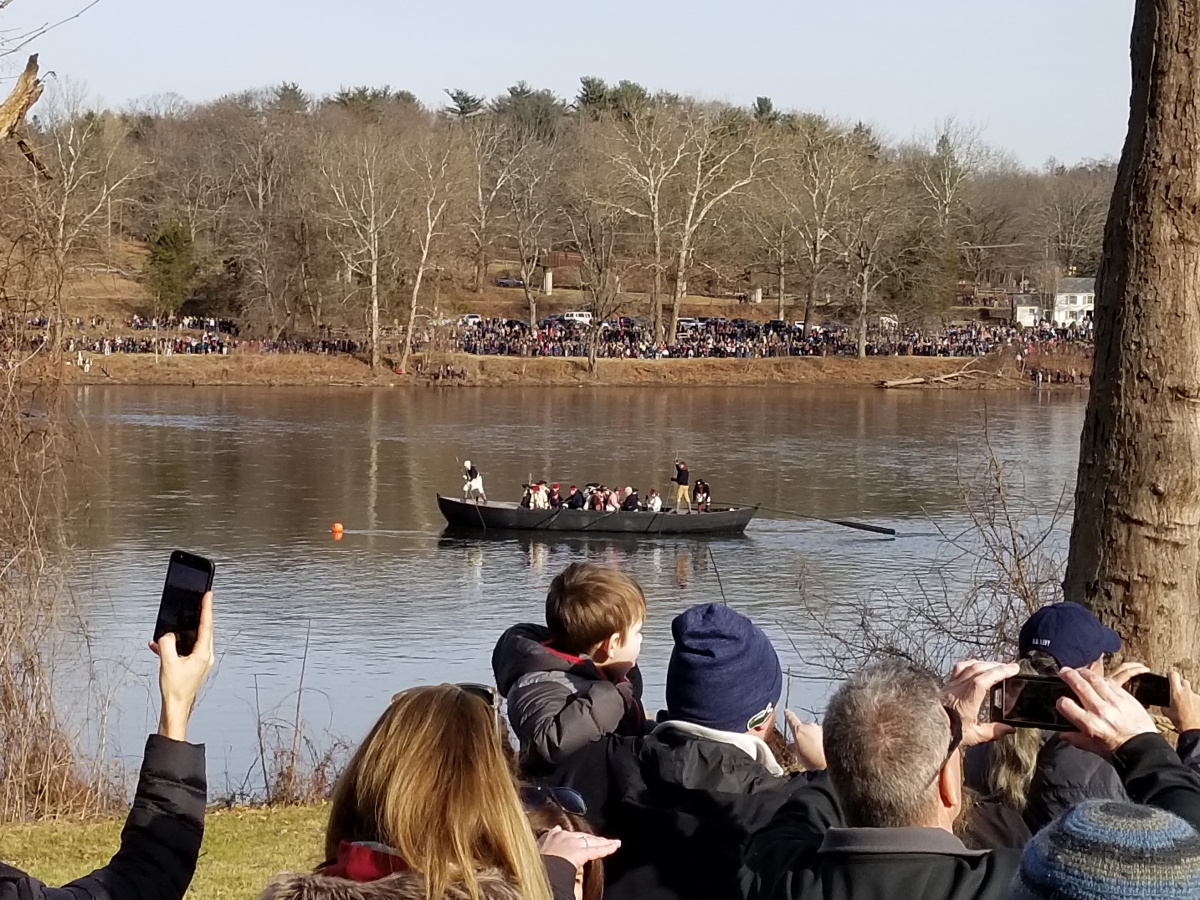
Taking advantage of what was said to have been a raucous Christmas celebration, Washington and his troops famously crossed the Delaware River late on December 25, 1776 and quietly marched into Trenton and took the city in a decisive victory. Just over a week later, Washington attacked Princeton, New Jersey and again scored another decisive victory, forcing the British to retreat back toward New York. While the battles were comparatively much smaller than the battles Washington had fought and lost earlier in the year, Washington was successful in changing the narrative of the American Revolution at a critical point in the Revolutionary War, ensuring that hope for Independence would remain through the winter.
Philadelphia Campaign
During the following Spring of 1777, Washington continued South with his Army to protect Philadelphia from a British attack. British General Howe had believed that taking the Capital city of Philadelphia could bring an end to the Revolutionary War and made capturing Philadelphia his top priority. Howe’s focus on Philadelphia, instead of meeting a large British force marching South from Canada, led to those British forces eventually being defeated at the Battle of Saratoga. Howe would however be successful in his attempts to take Philadelphia. Washington faced off against Howe at the Battle of Brandywine, but was outmaneuvered and forced to retreat and watch the British Army march unopposed into Philadelphia as America’s Founding Fathers in the Continental Congress fled Philadelphia to escape capture.
Washington attempted to take Philadelphia back on October 4, 1777, shortly after the British took over the city. The two armies met in Germantown, then a city just North of Philadelphia (today Germantown is a neighborhood within Philadelphia). Germantown was however another decisive defeat for Washington and his Army who were once again forced to retreat. Even in defeat, Washington continually managed to avoid disastrous losses since he was very aware of his Army’s shortcomings in terms of numbers, supplies and training. Washington was quick to retreat and hesitant to engage, describing his strategy to the Continental Congress as follows:
“We should on all Occasions avoid a general Action, or put anything to the Risque, unless compelled by a necessity, into which we ought never to be drawn.”
Despite the deft strategy which Washington showed in managing his army, some Americans had grown wary of the losses that Washington had suffered. Washington’s losses, compounded by the important success General Horatio Gates experienced at the Battle of Saratoga, led to the most acute threat to Washington's power during the Revolutionary War. Some members of the Continental Congress looked to replace Washington as Commander in Chief. In the end though, Washington’s supporters managed to save Washington’s job and Washington traveled to Valley Force to withstand another difficult winter.
Valley Forge
While the British comfortably wintered in Philadelphia, Washington and his army suffered through incredibly difficult conditions at
Valley Forge. Thousands died of disease, exposure, and starvation and once again Washington struggled to simply hold his army together. Washington made repeated pleas to the Continental Congress for necessary supplies which finally began to arrive in February of 1778.
While stuck at Valley Forge, efforts were also made to further train his Army which was still largely comprised of untrained volunteers. These efforts were led by a new arrival to Washington’s army,
Baron Von Steuben, an experienced Prussian General. Washington was extremely impressed by Von Steuben, who quickly became one of Washington’s most trusted advisers and Washington promoted him to Major General and his chief of staff.
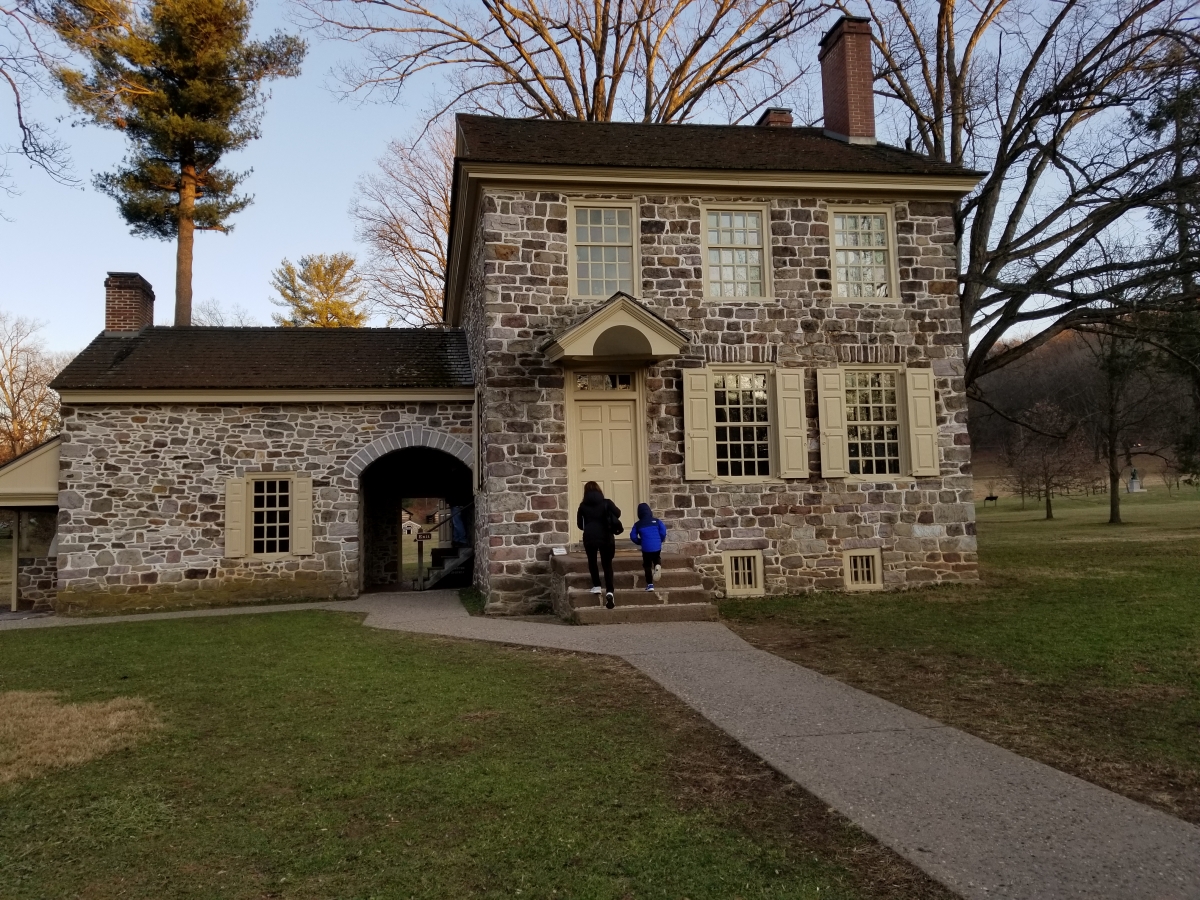
The good news continued at Valley Forge when soldiers were informed that the French had agreed to join the war as America’s allies. In response, Washington ordered a large military ceremony and celebration in early May of 1778. Then as the British feared the French entrance into the war could lead to a naval attack of Philadelphia, the British quickly evacuated Philadelphia to head north back to New York City. Washington pursued the British Army as they fled, meeting them at the Battle of Monmouth. Though largely fought to a draw, the Americans claimed victory and were inspired by their improved performance after months of intense training. Washington had successfully navigated through yet another difficult situation, and his army which was dispirited and on the verge of collapse just months earlier, were now more confident than ever in their prospects of winning the American Revolution.
Southern Theater and Yorktown
Washington’s hesitance to engage the British only increased once the French joined the Revolution. Understanding the cost of the war that the British were waging and the difficulties that they faced in protecting their global empire, Washington understood that the longer the Revolutionary War dragged on, the more the Americans benefited. The British were able to take Charlestown, South Carolina and established a stronghold on the southernmost region of the United States. Despite British advances, Washington was hesitant to over-extend himself and risk a disastrous defeat in an attempt to expel the British from the South, especially at that point when victory in the American Revolution seemed closer in reach than ever before.
When the
Marquis de Lafayette returned to America in July of 1780 with thousands of French Soldiers led by the Comte de Rochambeau, Washington finally began preparing to go on the offensive, with the intent of ending the American Revolution. Washington wintered in New York in 1780 and then began heading South toward British forces in Virginia. After numerous smaller battles and skirmishes, Washington’s trek south to Virginia culminated with the Siege of Yorktown.
At Yorktown, Washington’s Continental Army and the French Troops led by the Comte de Rochambeau fought the British to a decisive victory that resulted in the death or capture of all British forces and the surrender of British General Cornwallis. The victory at Yorktown ended significant military action in the Revolutionary War and led to the start of peace talks.
Victory and Resignation
After years of extensive negotiations,
Benjamin Franklin and other American statesmen in Paris, including
John Jay and
John Adams were able to reach an agreement to end the war. The Treaty of Paris ended the Revolutionary War, and was signed on September 3, 1783. Washington subsequently disbanded his army and resigned as the Commander in Chief. After over 8 years of fighting, Washington finally returned home to mount Vernon.
Washington had intended to retire from public affairs and concentrate on returning Mount Vernon to profitability, as the plantation had struggled financially in his absence. But Washington also felt the need to speak out when he thought that the nation he helped to create was going astray. Washington spoke out about the need for a stronger Federal government and decried the
Articles of Confederation as too weak and ineffective.
When a
Constitutional Convention was planned to meet in Philadelphia to address these concerns, Virginia selected Washington to lead the Virginia Delegation. Washington initially declined but he was convinced by James Madison that his presence at the Constitutional Convention would be invaluable. Washington once again left home for Philadelphia in May of 1787.
The Constitution of the United States
After arriving in Philadelphia, George Washington was quickly and unanimously voted to be the President of the Constitutional Convention in what amounted to the least controversial debate to come before the Constitutional Convention. Washington approved of
James Madison’s plan for a new Constitution, but as President, Washington attempted to largely stay out of the ensuing debates and present himself as a unifying figure.
The Constitutional Convention met at Independence Hall, and it quickly grew very contentious, so much so that numerous parties walked out on the Constitutional Convention before its conclusion. Most notably, two thirds of the New York delegation had departed just weeks after the Constitutional Convention started, leaving New York without enough delegates to even vote in the proceedings. Rhode Island, on the other hand, was so fearful that their rights would be trampled by the larger states in the union that they refused to even show up in the first place.
Washington was however able to keep the majority of the delegation together and guide them to a compromise which they finally reached, and the
United States Constitution was signed on September 17, 1787. Though Washington is not considered by historians as one of the primary authors of the Constitution, his presence as the leader of the Constitutional Convention was instrumental in bringing it to fruition.
The Constitution of the United States then underwent the arduous process of being ratified by the states, and the Constitution was finally ratified on June 21, 1788. Without a popular election, Washington was the only person unanimously elected President of the United States when he received all 69 electoral votes.
President of the United States
The United States Constitution went into effect on March 4, 1789, and on April 30, 1789, Washington arrived in New York City and was inaugurated as the first President of the United States. As the framers of the Constitution had expected Washington to become the first President of the United States, there is little guidance in the Constitution besides a broad explanation of the powers of the executive branch regarding what the job would actually entail. To that end, it was left largely to Washington to define his position.
As President, Washington continued to try to maintain the type of political impartiality he had grown a reputation for as Commander in Chief. While the country around him devolved into two warring parties, the Federalists and the Democratic-Republicans, Washington refused to associate with either political party, and members of both parties held positions in his cabinet.
In general though, Washington was in favor of a strong Federal government, a position which was greatly influenced by his time during the Revolution when an ineffective Federal government lacked the powers to raise taxes and properly fund the Continental Army. Washington endured many years as General of the Continental Army watching his men die of disease, exposure to the elements, and starvation due to inadequate supplies. To that end, Washington was convinced that a strong Federal government was essential to holding the United States together. These views often aligned Washington with the Federalists, an alliance that only grew stronger as his presidency became more established.
Washington’s economic decisions were largely aligned with the views of
Alexander Hamilton, Washington's Secretary of the Treasury and a prominent Federalist, who was also a proponent of the establishment of
The First Bank of the United States and the United States Mint, both of which were established in Philadelphia.
Washington also had to quell the first significant opposition to Federal authority. After the passage of the Whiskey Act in 1791, there was significant opposition on the Western frontier of America by farmers who had come to depend on the distillation of spirits as a primary source of income. This eventually led to an armed insurrection against a tax collector in Western Pennsylvania. Washington acted decisively and used his military powers to raise a militia force of over 10,000 soldiers and led them West of Philadelphia to put down the insurrection.
Washington, who had to be convinced to serve as President, had no desire to seek a second term as President. However, the young country was on very unstable ground, facing struggles to remain united at home, and uncertainty abroad as France and Britain faced off in yet another war. Washington was convinced his steady hand was needed, and he eventually accepted a second term and was once again unanimously elected in the electoral college.
As the British War with the French intensified, Washington faced difficult decisions as the British began attacking American merchant ships that were trading goods with the French. The resulting tensions nearly led to a second war with Britain, but Washington was convinced that the country was too weak to become involved in a War between the two European superpowers. Washington decided to remain neutral and signed a treaty authored by John Jay in order to put an end to British attacks on American ships. These actions were popular among Federalists, but many Democratic-Republicans viewed the treaty as a betrayal and believed America was acting too subservient to the British. The incident increased polarization between the two competing political factions in America.
By the end of 1796, Washington was exhausted from his years of public service, and he was in poor physical condition. Fearful of the chaos that could erupt if he died in office, Washington was convinced of his need to retire. Unlike the last election, no one could convince him to seek a third term as President. Once it was decided that he would retire, Washington asked Alexander Hamilton for his assistance in penning a Farewell Address. While the address is believed to have been primarily authored by Hamilton, the actual content of the speech was dictated by Washington.
In the Farewell Address, Washington largely attempted to refrain from partisan topics and attempted to highlight the achievements of his presidency, while vigorously extolling the importance of preserving the Federal government and the unity of the country. Washington's Farewell Address has left an enduring marks of Washington's presidency and references to it can be found everyone, inlcuding on the
Tomb of the Unknown Soldier Memorial in Philadelphia's Washington Square Park, on which you can find the following quote:
"The independence and liberty you possess are the work of joint councils and joint efforts of common dangers, suffering and success"
Washington's Final Years
Washington retired to Mount Vernon where he had hoped to dedicate the rest of his life to running his plantation. Criticism of John Adams, his Vice President and successor as President of the United States, was however extraordinarily strong in Virginia, and Washington was often moved to speak to his defense and support his decisions. When Adams became entangled in the Quasi-War 1798 with France, Adams named Washington Commander in Chief of the Army, and Washington came out of retirement and accepted the position.
Washington served in the role for the remainder of his life, but his actual participation was limited due to poor health. In December of 1799, Washington fell ill and despite attempts from doctors to restore his health, Washington's condition rapidly deteriorated until he passed away on December 14, 1799.
George Washington in Philadelphia
Washington first came to Philadelphia in 1774 as a Delegate to the First Continental Congress which met at Carpenters' Hall. Washington returned to Philly the following year in 1775 as a Delegate to the Second Continental Congress. While serving as a member of the Second Continental Congress, Washington worked at Independence Hall, but he departed not long after his arrival upon being named Commander in Chief of the Continental Army. In 1787, Washington again worked in Independence Hall when he served as the President of the Constitutional Convention. Washington signed the United States Constitution on September 17, 1787. While working on the Constitution, Washington initially stayed in a boarding house operated by Mrs. Mary House, located at the corner of 5th and Market Streets, before he moved into Robert Morris' mansion a few houses away.
Washington returned to Philadelphia in 1790 as President of the United States, while Philadelphia served as Capital of the United States. While President, Washington was sworn in for his second term as President at Congress Hall. As President of the United States, Washington helped to establish The First Bank of the United States and United States Mint, both of which were built in Philadelphia. When he was in Philadelphia, Washington worshiped at Christ Church, often referred to as the "Nation's Church", which stands just North of Market Street on 2nd Street. During this time, Washington resided within the President's House at 6th & Market Streets until his second term ended in 1797.
Today, you can see a statue of President Washington outside of Independence Hall on the Chestnut Street side. You can also see a statue commemorating Washington for his role in the creation of the United States Constitution in the Signers' Hall exhibit of the
National Constitution Center. Signers' Garden pays tribute to the Founding Fathers, including those such as Washington who signed the Constitution of the United States. The
United States Mint is still located in Philadelphia today, though no longer in the original building. Today, The First Bank of the United States, the National Constitution Center, Independence Hall, Christ Church, The President's House, Signers' Garden are all stops visited along
The Constitutional Walking Tour!




